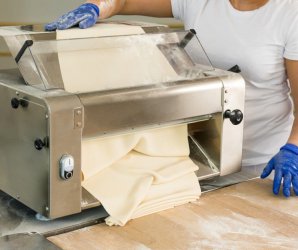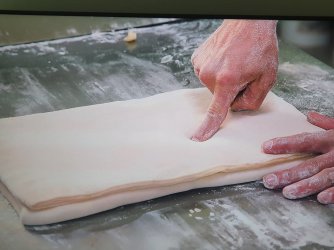If you are thinking of making croissants and would like a little help beforehand, check out the below hints and tips to help you bake.
It's worth noting that croissants don't always come out how you planned them, and it may take you a few goes before you get them right, so remember practice makes perfect. On the other hand, you may be one of the lucky ones and produce a beautiful batch first off. Regardless of your experience, I have listed some key elements that may help you going forward.
Good luck and happy baking!

It's worth noting that croissants don't always come out how you planned them, and it may take you a few goes before you get them right, so remember practice makes perfect. On the other hand, you may be one of the lucky ones and produce a beautiful batch first off. Regardless of your experience, I have listed some key elements that may help you going forward.
Good luck and happy baking!

Ingredients and Temperature
- The key to a good croissant is temperature and quality ingredients.
- The butter and dough need to be as cold as possible.
- If one is warmer than the other, you'll have problems when you come to laminate the dough.
- Ensure you use a high-fat content butter which means less water; if it contains a lot of water, you won't get the flaky croissant.
- Timing is everything, so you have to be quick when adding the butter and rolling because you create heat on the dough, causing the butter to get warm.
- A sheeter would be great for this process as it flattens quickly, creating little heat.
Laminating Process
- This is where you roll the dough, place butter on top of it, fold the dough over and then roll it again; this helps make your internal layers.
- When you have laminated once, push your finger in the top of the dough to make an indent before wrapping and placing it in the fridge for around 30 minutes.
- Make a finger indent/impression after each lamination; that way, each time you pull it out of the fridge, you will know by looking at it how many times the dough has been laminated.
- For croissants, you want to laminate at least three times. This may vary depending on your recipe.
Rolling and Shaping your Croissants
- When making the croissant, the dough needs to be about a quarter of an inch thick and then cut into triangles.
- Each triangle is a single croissant.
- Cut a small vertical slit (around 1cm -1.5cm) in the centre of the large base of the triangle. (This will act as an air gap at the edge of the croissant, which will force steam into the croissant and help it rise when baking).
- Lift one triangle into the air in front of you, hold the base with your left hand, and then lightly pull down on the pointed end with your right hand to help stretch/elongate the dough a little before baking.
- Place on the work surface and then roll into shape.
- Place them on a covered baking sheet with plenty of space between them and allow to prove for around 2 hours.
- Egg wash them before baking.
If done correctly, the laminating process will create a beautiful flaky pastry with very thin layers.
Then all that's left to do is enjoy them!
Last edited:






